August 15, 2024 · 9 min read
How to Build an Effective DEI Committee: Strategies for Lasting Impact
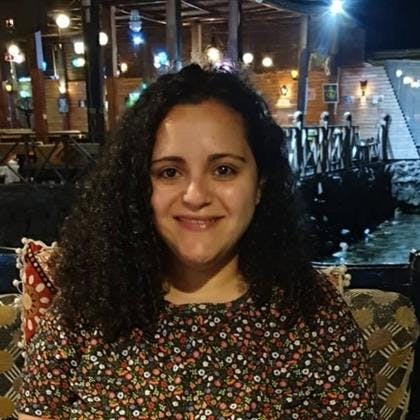
Shaimaa Badawi
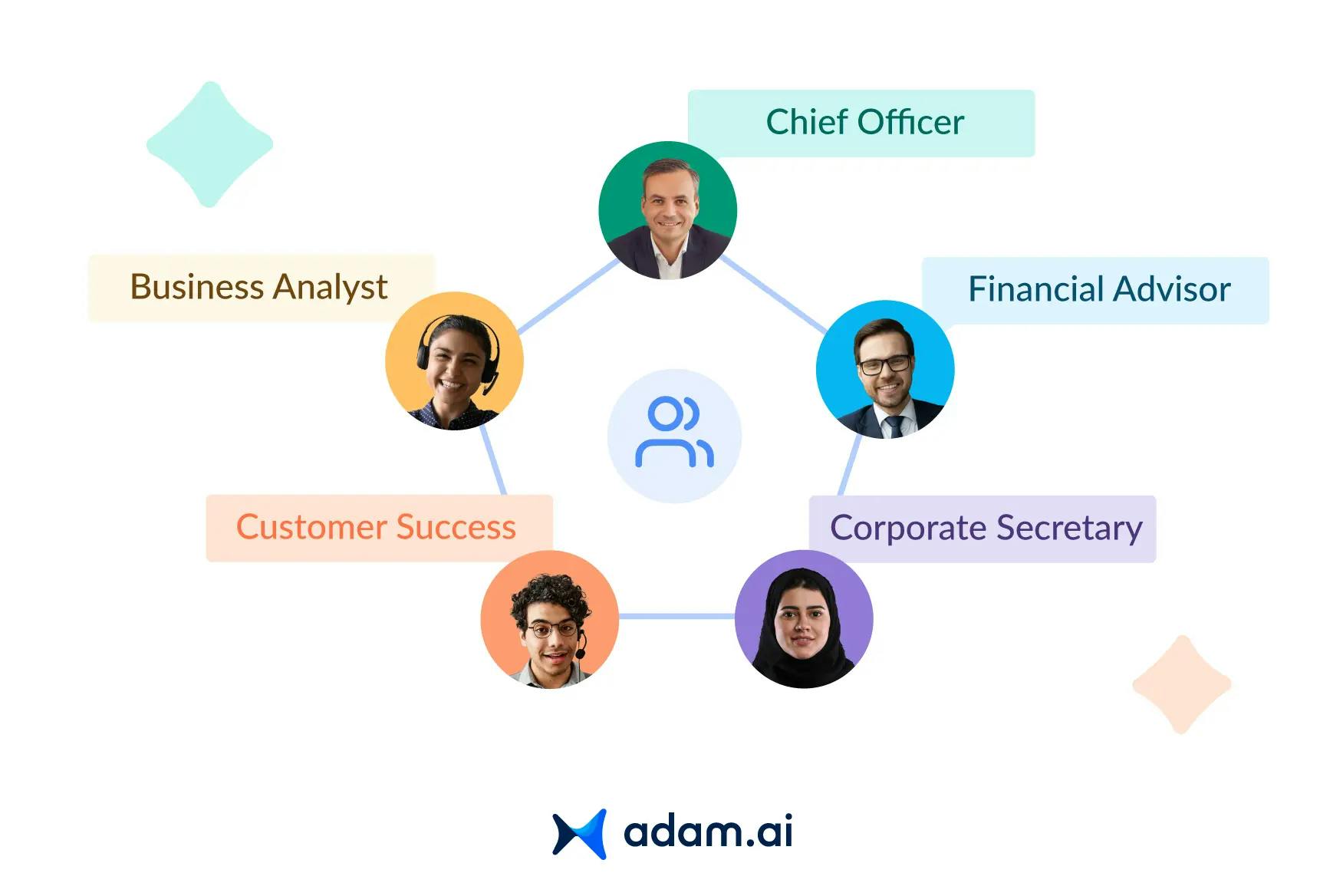
Creating a workplace where everyone feels valued and supported takes more than good intentions; it takes action. A DEI committee can be a powerful force for change, but only if it's set up for success. Whether you're just starting a DEI committee or looking to improve an existing one, this guide offers practical tips for building a team that drives real progress. Dive in to learn how to secure leadership buy-in, set meaningful goals, and ensure your DEI initiatives make a lasting impact.
What does DEI stand for?
Diversity, equity, and inclusion, commonly referred to as DEI, are fundamental concepts shaping modern workplaces and organizations. These principles focus on embracing varied identities, promoting fairness in opportunities and resources, and ensuring that all individuals feel valued and respected within their environment.
As industries increasingly prioritize DEI, creating a dedicated DEI committee within an organization has become essential. Such committees play a key role in fostering a more inclusive culture, driving strategic decisions that enhance diversity, and ensuring that equity is embedded in every aspect of the workplace.
What is the goal of a DE&I committee?
The goal of a DEI committee is to foster an inclusive and equitable workplace by addressing systemic inequities and promoting diversity. This is achieved through establishing clear, actionable, and measurable goals that align with the broader organization’s DEI vision.
By setting transparent objectives and benchmarks, the committee works to create a work environment where all employees feel valued, respected, and supported. Ultimately, these efforts aim to not only improve organizational culture but also demonstrate the positive business impact of prioritizing diversity, equity, and inclusion.
What is the role of a DEI council?
The role of a DEI committee involves taking practical steps to achieve the organization's DEI goals. Key responsibilities include collecting data to assess current diversity levels, identifying and addressing problematic trends, and developing strategic initiatives that improve diversity, equity, and inclusion throughout the company.
The committee also leads efforts in reviewing workplace policies, promoting diversity training, launching mentorship programs, and establishing subcommittees focused on specific areas like recruitment and policy development. Through collaboration with leadership and employees, the DEI committee works to ensure that its efforts are effective, actionable, and contribute to long-term cultural transformation within the organization.
Who should lead DEI committee?
Leadership of a DEI committee can vary based on an organization’s structure, but it typically requires a dedicated approach from both executives and a DEI-specific task force or manager.
Executive leadership
Senior executives or directors are often chosen to lead DEI initiatives, ensuring alignment with the company’s broader strategic goals. Executives provide authority and accountability for DEI progress, establishing a culture of inclusivity from the top down.
Dedicated DEI task force or manager
A growing number of organizations appoint a dedicated DEI manager or task force specifically responsible for implementing DEI strategies and tracking progress. This group focuses on data collection, reporting to leadership, and ensuring actionable steps are taken toward diversity, equity, and inclusion goals.
Internal and external councils
Internal councils may be headed by the CEO or other senior staff, with participation from employees across all levels to promote a diverse perspective. External councils can include community partners, businesses, government representatives, or diversity experts who offer broader insights and hold the organization accountable to its DEI goals.
Shared responsibility
While leadership provides direction, DEI is a shared responsibility across all levels of the organization. Everyone plays a role in fostering an inclusive environment. Employees contribute by embracing DEI practices in their daily roles, but management and leadership are expected to set the tone and guide the overall culture toward inclusivity.
What is an example of DEI?
Implementing DEI initiatives within an organization is crucial for fostering an environment where all employees feel valued, supported, and given equal opportunities to succeed. Here are several examples of impactful DEI initiatives that organizations can implement:
Inclusive hiring practices
Organizations can adapt their hiring processes to reduce biases by eliminating requirements that may exclude certain candidates, such as unpaid internships or mandatory college degrees. They might also use tools that review job descriptions for inclusive language and ensure the company’s commitment to DEI is clearly stated in postings.
Mentorship and sponsorship programs
Companies can establish formal programs where experienced employees mentor and sponsor individuals from underrepresented groups, providing guidance, support, and opportunities for advancement. These programs help bridge gaps in career progression and ensure equal opportunities for growth.
Diversity training
Offering regular training sessions that educate employees on diversity, equity, and inclusion topics helps to raise awareness about unconscious biases and fosters a more inclusive workplace culture. This training can focus on various areas, including inclusive leadership and ways to integrate DEI principles into everyday business practices.
Employee surveys and feedback collection
Regularly conducting surveys to gather feedback from employees on DEI-related topics helps organizations understand their current state of inclusivity and identify areas for improvement. These surveys can guide policy changes and help track progress over time.
Pay equity initiatives
Organizations can assess and address pay disparities by conducting thorough audits to ensure equitable compensation across all employee groups. This helps identify and eliminate wage gaps based on gender, race, or other factors, promoting fairness and equality.
Educational events
Hosting events focused on DEI-related themes, such as cultural celebrations or panel discussions on inclusion, helps raise awareness and encourage dialogue among employees. These events provide opportunities for employees to share their personal experiences and learn from one another.
Flexible work policies
Introducing flexible work options, such as remote work or hybrid schedules, can help accommodate diverse needs and promote work-life balance. This is particularly beneficial for employees with caregiving responsibilities or those who need adaptable working conditions.
How to structure a DEI committee
Establishing a well-structured DEI committee is essential for creating meaningful, sustainable progress in promoting diversity, equity, and inclusion within an organization. Here's what you should do:
1. Identify potential members
Recruit diverse members from different departments, levels of seniority, and backgrounds. Consider diversity in terms of race, gender, disability, age, and other characteristics to ensure a wide range of perspectives.
2. Recruit volunteers
Participation should be voluntary to ensure that members are genuinely committed to the cause. Encourage employees who are passionate about DEI to join, while ensuring that membership reflects a cross-section of the organization.
3. Define clear goals and objectives
Set specific, actionable, and measurable DEI goals for the committee. These should align with the company’s broader DEI strategy and may include short-term and long-term objectives such as improving representation, fostering inclusion, or advancing pay equity.
4. Create organizational buy-in
Ensure that DEI committee participation is recognized and supported by leadership. Committee work should be acknowledged in performance reviews, and leadership should provide the resources needed for the committee to succeed.
5. Establish internal structure and governance
Determine the leadership of the committee, such as appointing a chair or co-chairs to guide activities and facilitate meetings. Include an executive sponsor, ideally from senior management, to ensure that the committee’s efforts are aligned with organizational goals and have sufficient backing.
6. Build communication and decision-making processes
Develop protocols for regular meetings, internal communication, and decision-making. Ensure that the committee has a system for addressing changes, such as adding new members or resolving conflicts. Use platforms like Slack or email for ongoing communication.
7. Provide foundational training
Offer DEI training and resources to all committee members to ensure that they are well-equipped to lead initiatives and promote inclusive practices within the organization.
What are DEI best practices?
Running a successful DEI committee requires a strategic approach that ensures inclusivity, accountability, and continuous improvement. Here are some top tips to help guide your DEI committee toward achieving impactful and sustainable change within your organization.
- Secure leadership support: Ensure your leadership is fully behind the DEI committee. Their buy-in is crucial for allocating resources, promoting DEI initiatives across the organization, and setting a top-down culture of inclusivity.
- Set clear, focused goals: Start by defining specific, measurable, and actionable goals that align with the organization’s broader mission. Prioritize initiatives that tackle core DEI issues, ensuring that the committee’s work is both focused and impactful.
- Build a diverse and representative membership: Assemble a diverse team of elected members from various departments and backgrounds to ensure a broad range of perspectives. This diversity helps the committee address the unique challenges faced by different groups within the organization.
- Promote transparency and accountability: Ensure transparency by regularly sharing meeting minutes, progress reports, and updates with the entire organization. Establish clear roles and responsibilities for committee members, holding them accountable for driving the DEI goals forward.
- Foster employee engagement and inclusive culture: Encourage the development of Employee Resource Groups (ERGs) and create open lines of communication between the DEI committee and employees. This promotes a more inclusive culture where all voices are heard.
- Provide ongoing training and education: Equip the committee and employees with continuous DEI training to address unconscious bias and foster cultural competency. Regular education ensures the team remains knowledgeable and aligned with the latest DEI practices.
- Monitor progress and adjust: Set key performance indicators (KPIs) and timelines for DEI initiatives. Continuously track progress, evaluate the effectiveness of the committee’s efforts, and be prepared to adjust strategies based on feedback and evolving needs.
Facilitating DEI committee meetings with adam.ai
DEI committee meetings are critical for driving progress toward a more inclusive and equitable workplace. With adam.ai, DEI committee members can leverage an intelligent meeting management platform that simplifies collaboration, documentation, and accountability.
Here’s how adam.ai can enhance your DEI committee meetings:
- Agenda and content management: Easily prepare agendas that align with DEI goals and initiatives. Use adam.ai’s smart note-taking and content collaboration features to ensure that all action items, decisions, and discussions are well-documented and accessible to every committee member.

- Action tracking for accountability: Ensure that DEI initiatives move forward by using adam.ai’s action and decision tracking tools. Monitor progress on tasks, set reminders, and track outcomes to guarantee that committee goals are met, and nothing falls through the cracks.

- Multi-space organization for diverse initiatives: Create dedicated spaces for different DEI initiatives, subcommittees, and working groups within the platform. This helps committee members stay organized, manage multiple projects, and ensure that all DEI efforts are aligned with the organization's broader goals.
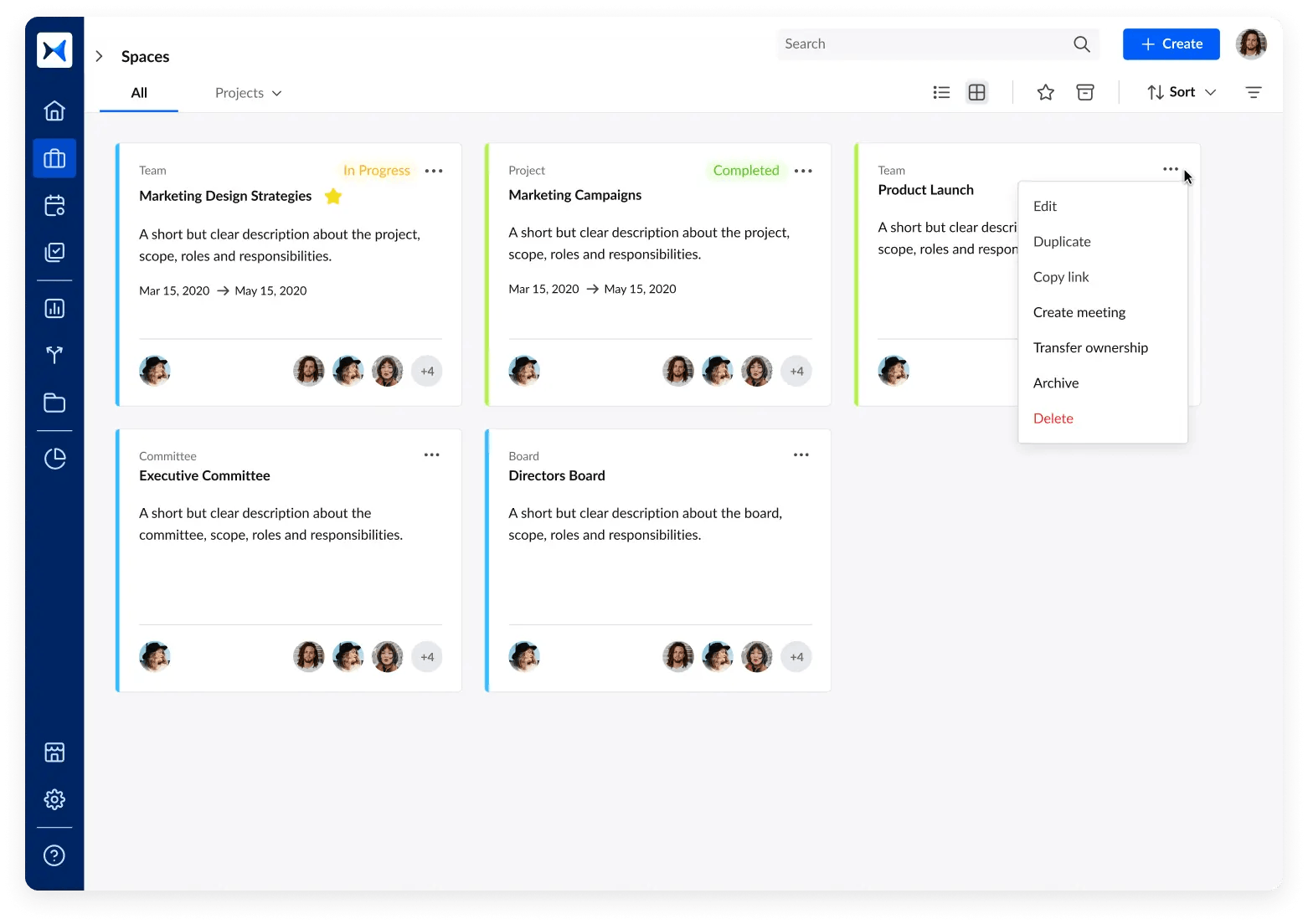
- Automated meeting minutes and documentation: Save time and increase efficiency by automating the generation and distribution of meeting minutes. adam.ai ensures that all DEI-related discussions, decisions, and follow-ups are accurately captured and easily shared, promoting transparency and engagement.
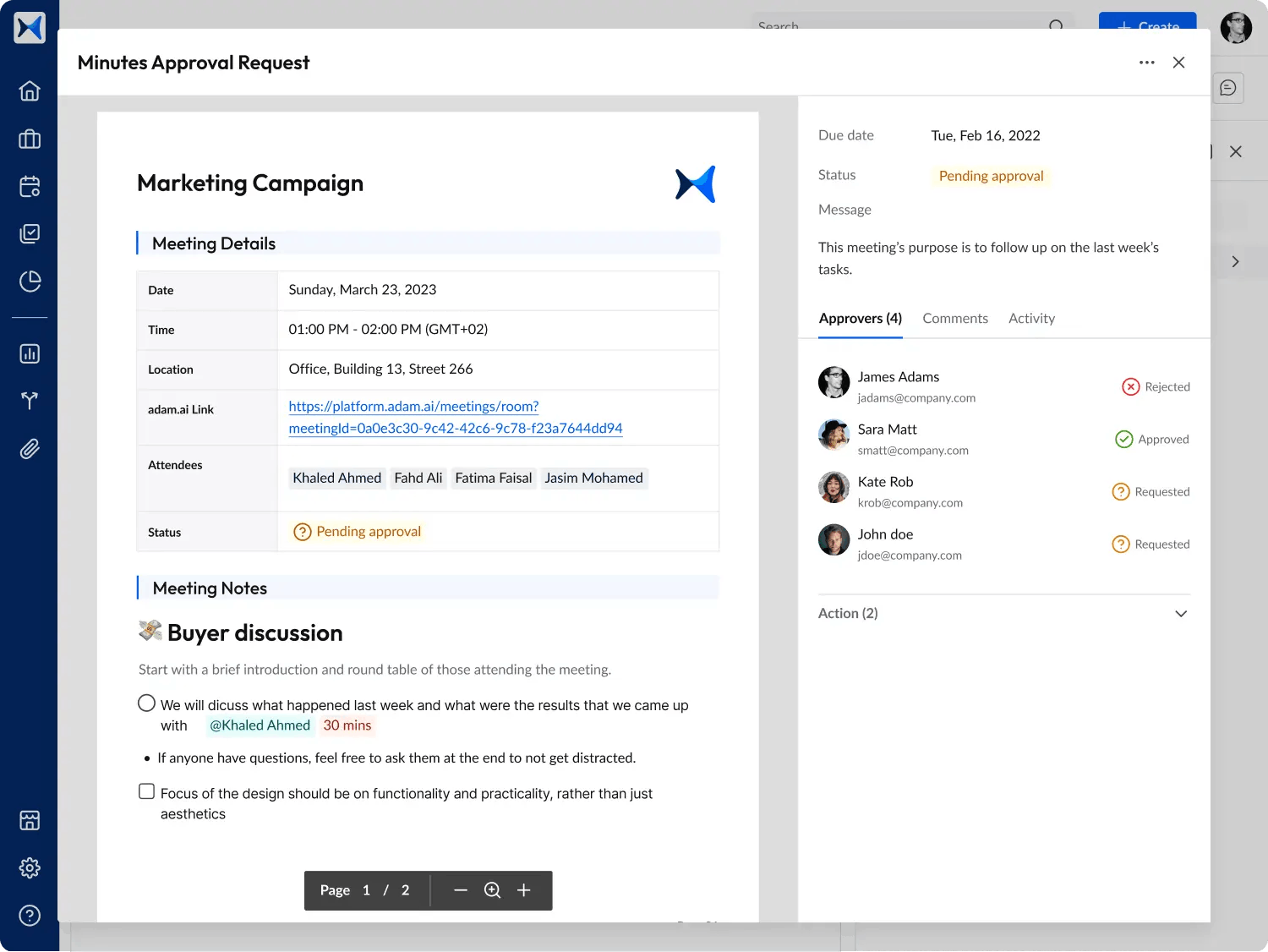
- Voting and decision management: Simplify the voting process by conducting polls within the platform, attaching relevant documents, and recording all decisions made during meetings. adam.ai ensures that every vote is documented, with clear records of who voted and how, promoting fairness and transparency in decision-making for your DEI initiatives.
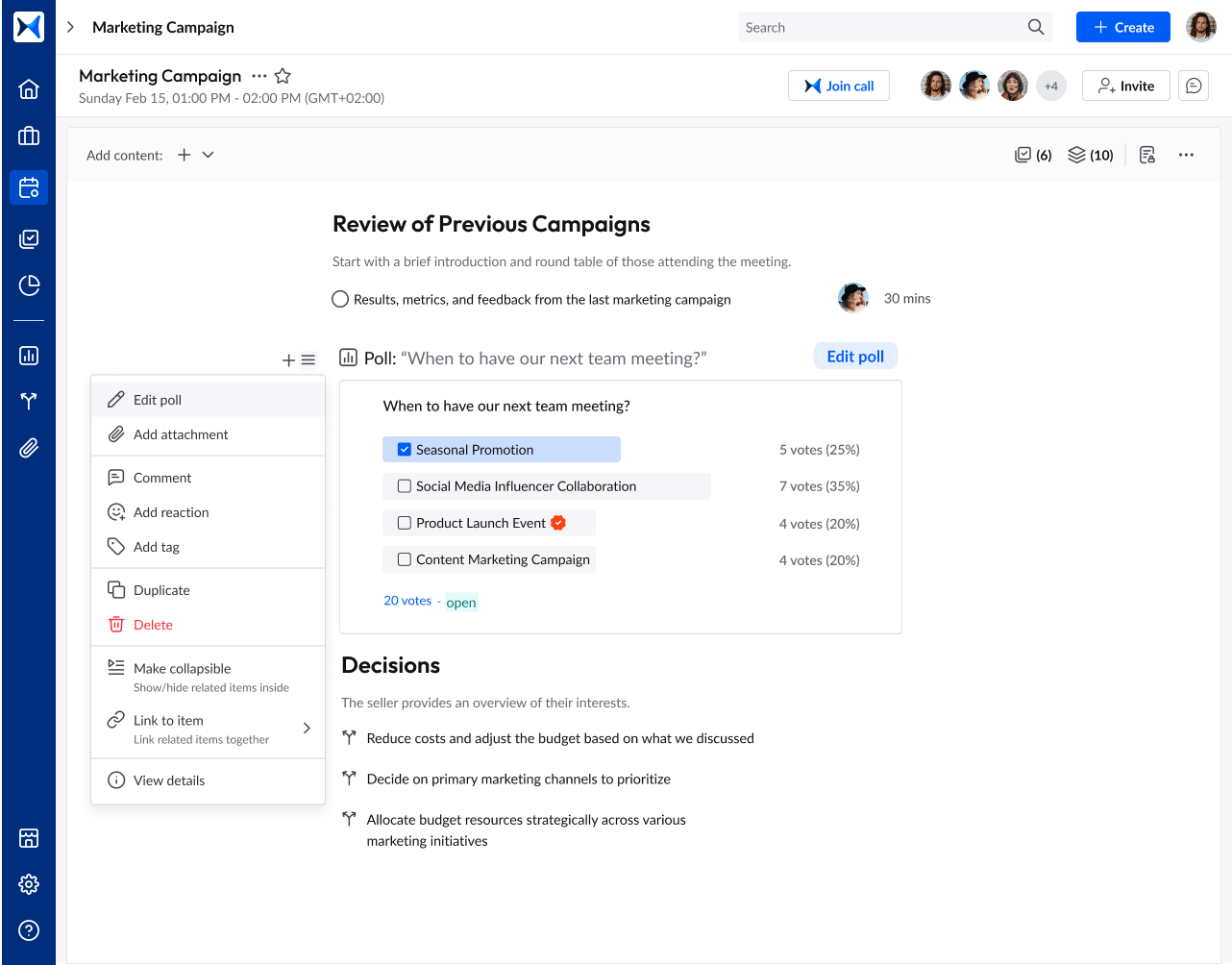
- Analytics dashboard for informed decision-making: Leverage adam.ai’s analytics dashboard to assess meeting participation, track decision outcomes, and monitor the progress of action items. This feature helps DEI committees evaluate the effectiveness of their initiatives and supports data-driven decision-making, ensuring that goals are consistently met and improvements are identified.
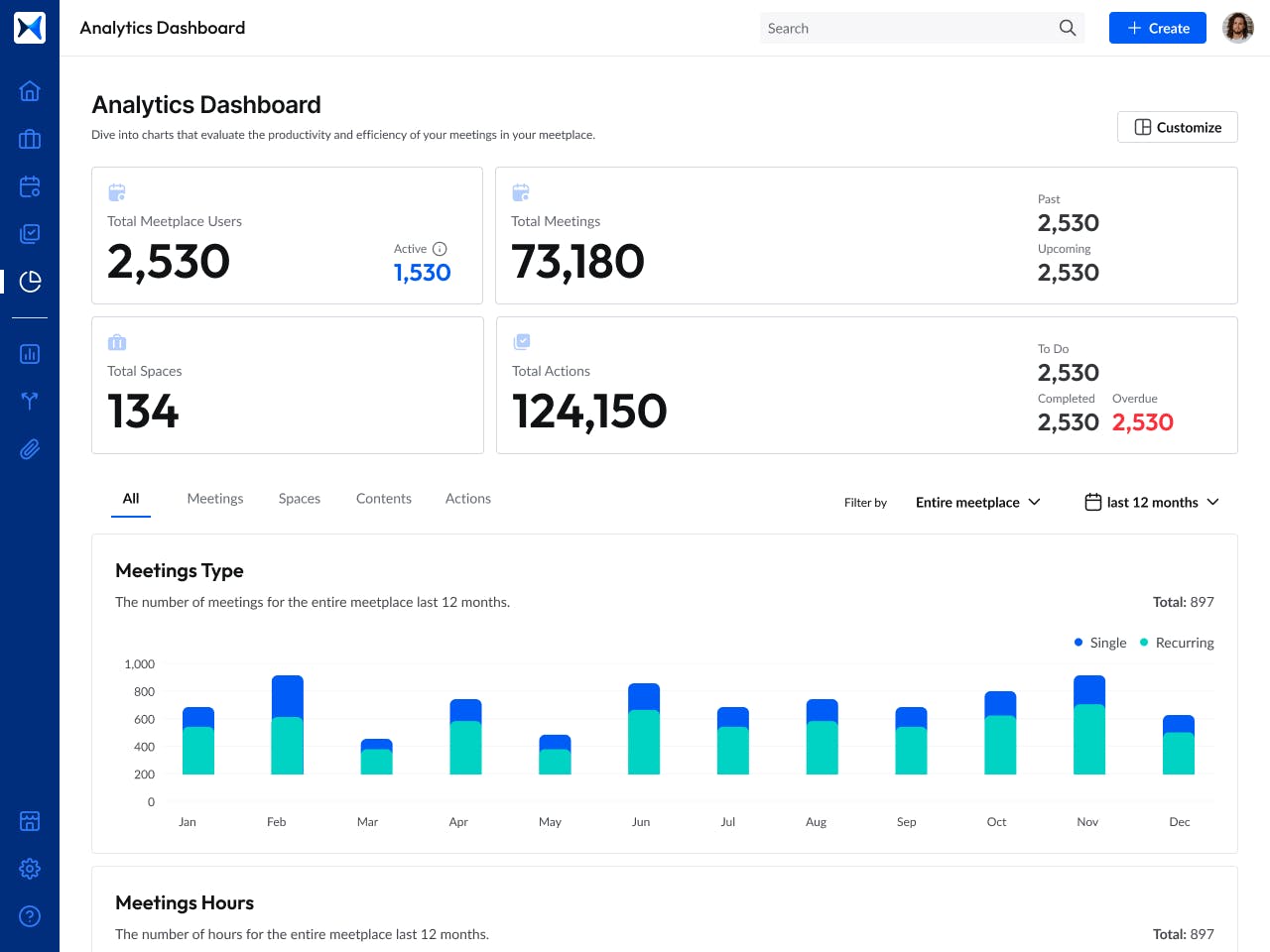
Transform how you conduct critical meetings—From meticulous preparation to effective execution and insightful follow-up, adam.ai integrates comprehensive analytics, full customization, and intuitive interfaces with powerful meeting management tools.
Easy onboarding. Enterprise-grade security. 24/7 dedicated support.
The bottom line
Building and managing a successful DEI committee requires intentionality, clear direction, and a commitment to creating real change. By securing leadership support, fostering transparency, and setting actionable goals, your DEI committee can serve as a powerful driver of inclusion and equity within your organization.
Modern meeting management tools enhance the process of running a DEI committee effectively. And while there may be multiple solutions available, here is why adam.ai is the meeting management software platform you can trust:
- adam.ai is one of Atlassian Ventures' portfolio companies.
- In the meeting management software category on G2, adam.ai has been ranked a leader and a high performer for successive quarters in the past years.
- adam.ai has been included in the Forrester Report in the AI-enabled meeting technology landscape.
- adam.ai is trusted and used by powerful teams and organizations worldwide for all types of critical meetings, like board, committee, project management, and business development meetings.
- And most importantly, adam.ai integrates with your existing workflow, is SOC2 compliant, provides dedicated support and success, and has a free trial option.
Subscribe to adam.ai blog
Stay ahead with the latest insights—get our newest blog posts, tips, and updates sent straight to your inbox.